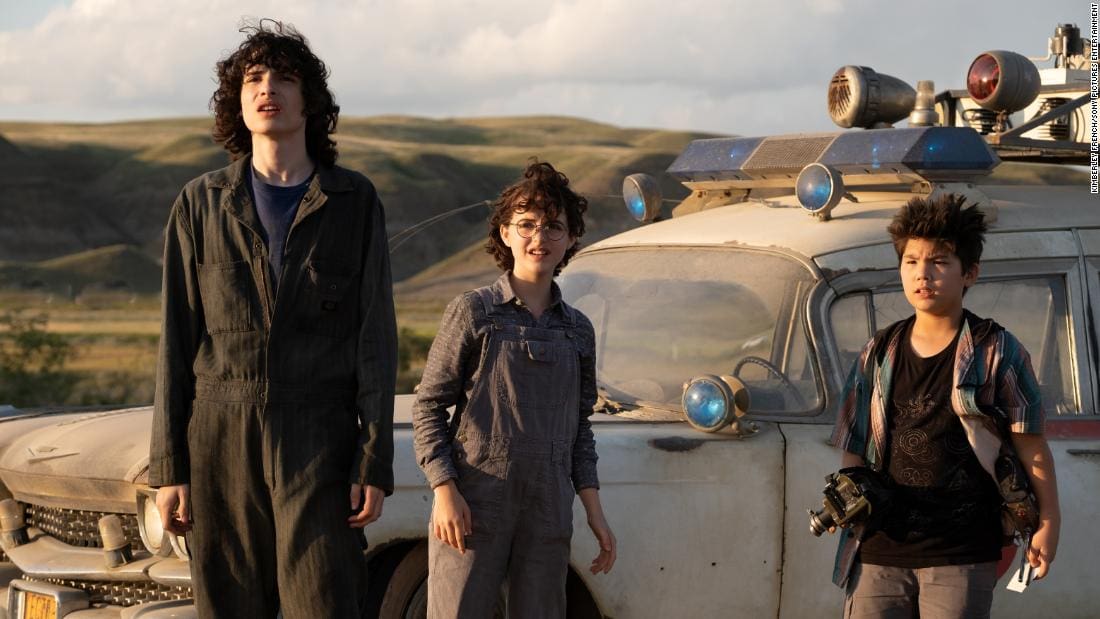
We tell ghost stories, in part, because we hope there is something beyond the natural, and the original Ghostbusters used comedy to heighten this hope. By treating human foes like the inspector as absurdly as it does Slimer, the audience can appreciate the sloppy silliness of the supernatural over the malicious, persnickety foolishness of the natural.
2016’s solid Ghostbusters: Answer The Call provided a fresh spin on the specific dichotomy of the silly supernatural/cynical natural. But Ghostbusters: Afterlife expands upon that by returning to the source of that dichotomy. It returns to the fearful uncertainty and hope one gets when entering the home of a dead loved one. The thought that my Grandpa could still inhabit the walls of his house is unfathomable, terrifying, and the most comforting thing in the world.
When Harold Ramis’ character Egon Spengler died, his estranged daughter Callie (Carrie Coon) was not exempt from that. Her audacious, necessary hope is still there, even if it’s beneath a rotten foundation and thousands of dollars of debt.
Alas, those last two problems are inescapable, especially when she needs to provide for her children. Her son Trevor (Finn Wolfhard) borders on resentful of the expectations put on him by his Grandfather, and his only interest is flirting with Lucky (Celeste O’Connor). But through encouragement from his science summer school teacher, Grooberson (Paul Rudd), he tastes that wonder that his scientific sister Phoebe sees in nearly everything.
The allegories are fairly clear. The film looks at science the way it sees ghost stories: as distinct ways of understanding the world beyond. Afterlife taps into this by calling back Ghostbusters ghosts and images, things it does indeed revere.
However, it doesn’t let its characters revere them for the mere sake of being from Ghostbusters.
This is key to the film, and something co-writer/director Jason Reitman was smart to tap into. Just because Ghostbusters influenced Stranger Things doesn’t mean the kid from Stranger Things understands the images of Ghostbusters. When a demon is unleashed from a ghost trap, the characters respond with a confused silence. They knew something would happen, but they didn’t know what it was that escaped.
Similarly, Grooberson is not in awe of the ghost trap because it’s an object that was in an ’80s sci-fi comedy. He’s in awe of what it can do in his world. Even the images of ghosts and demons do little to frighten the new cast.
This is the reason Reitman was smart to not restrict Afterlife to New York. New York is certainly an essential part of the original film, but the original film was a comedy about escaping the prison of the natural. Afterlife continues that tradition by putting them in a new prison, and showing the beautiful, essential futility of their attempted escape.
Because the prison we’re really trying to escape is death, and that’s a foe that can’t be outrun. Ghostbusters: Afterlife knows this. It knows the tragedy of death is inescapable, that our flesh will decay, and our skyscrapers and farmhouses will crumble all the same.
In accepting that we will lose these things, we accept that we love them, and accept that there may be something beyond them.
And this is what Afterlife, through all its jokes, through all the nostalgic memberries, and through all its slime, is about.

